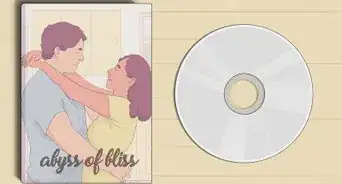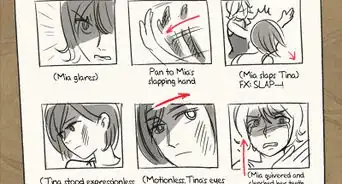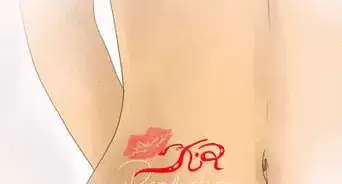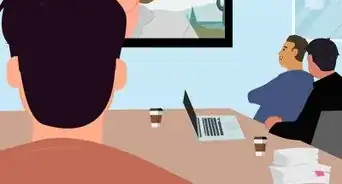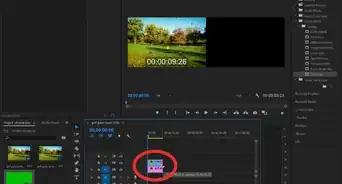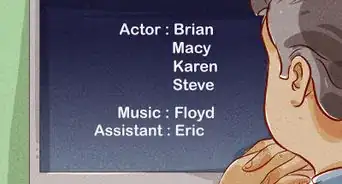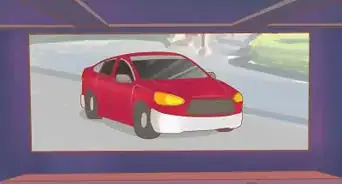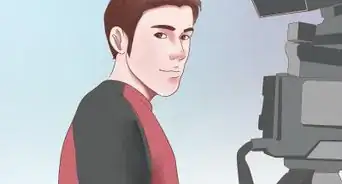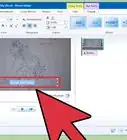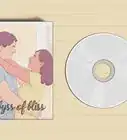This article was co-authored by Kendall Payne. Kendall Payne is a Writer, Director, and Stand-up Comedian based in Brooklyn, New York. Kendall specializes in directing, writing, and producing comedic short films. Her films have screened at Indie Short Fest, Brooklyn Comedy Collective, Channel 101 NY, and 8 Ball TV. She has also written and directed content for the Netflix is a Joke social channels and has written marketing scripts for Between Two Ferns: The Movie, Astronomy Club, Wine Country, Bash Brothers, Stand Up Specials and more. Kendall runs an IRL internet comedy show at Caveat called Extremely Online, and a comedy show for @ssholes called Sugarp!ss at Easy Lover. She studied at the Upright Citizens Brigade Theatre and at New York University (NYU) Tisch in the TV Writing Certificate Program.
There are 10 references cited in this article, which can be found at the bottom of the page.
wikiHow marks an article as reader-approved once it receives enough positive feedback. In this case, several readers have written to tell us that this article was helpful to them, earning it our reader-approved status.
This article has been viewed 270,202 times.
A short documentary is a lens on a self-contained world. Whether your subject is the Arab Spring, human happiness, or pet cemeteries, it has to be engaging and say something about the world. Contrary to what you might think, a short doc takes just as much time as a feature-length doc — but it's also just as much fun to make. If you want to start making your vision a reality, there's no better time than now to make a short documentary.
Steps
Pre-Production
-
1Choose a subject -- what you want to make a film about. Remember, you'll need to complete the project. Think about who, what, and where you'll shoot. Form a basic idea for a story and if you're having trouble, read short stories for inspiration.[1]
-
2Watch documentaries. Once you have worked out what style of documentary you are going to make, analyze similar documentaries to identify conventions.[2] Make sure you pay attention to the documentaries narrative structure, as this is where most amateur documentary filmmakers go wrong.Advertisement
-
3Write a treatment. This initial document should include a summary of the documentary, and the goal or purpose of the film. Outline your script, covering each major section but keeping the outline under 300 words.[3]
-
4Script your story idea. You will need to have a script, or you can't have a film. While thinking of an idea, make sure you write something attractive to your viewers. For example, If you're giving the script to someone who likes drama, add lots of drama. Comedy, add comedy, etc.[4]
-
5Prioritize scenes. From your outline identify priority scenes.
-
6Draw out a storyboard, illustrating the shots you plan to use. Don't worry about following the storyboard perfectly. It's just a good idea to get your thoughts on paper and a great way to see if you can communicate an idea "visually" rather than needing the actors to verbally communicate the concept. The viewer is watching first and listening second.[5]
- If you prefer a more structured approach, create a shot-by-shot list of all your camera work.
-
7Get feedback. Show what you have so far to friends, family, teachers, etc. Polish your work until you're ready to film.
-
8Be prepared. Brainstorm the worst things that could happen during making your documentary and how will you deal with these. Remember to look at both technical problems and story problems.
Production
-
1Get ready to shoot it. Choose the equipment, something that can record video. There are many choices. This process might take months or even years, but you have to keep looking. Make sure your video recorder works with your VCR or editing equipment.
-
2Learn a few features, and review how your recording device works. Learn how to start and stop recording, fast forward, rewind, playback, and anything else that you might need. Save the special effects for your second or third project.[6]
-
3Find people who aren't busy and are willing to work hard on your film. Provide food or payment for your crew if you can. Otherwise, see if you can do any favors for them after they help you.[7] They'll appreciate it and be able to hang around longer.
-
4Create a schedule. This will keep you focused on your project.[8]
- Get a diary.
- Identify what days you and your crew is available.
- Jot down priority scenes.
- Film interviews early on.
-
5Shoot your footage. If you want to highlight your pet, you can shoot video of your pet eating, sleeping and playing and perhaps put it to music. If you are under a tight time pressure, consider using a second camera as this will enable you to be twice as efficient.[9]
-
6Interview the subjects.[10]
- Plan questions. The easiest way of doing this and keeping focus is to write who, what, when, where, why, how, and then brainstorm questions around these.
- Subject must be comfortable around the camera and open and honest.
- Talk to them before filming, you could talk for half an hour or more to make the subject comfortable around you.
-
7Keep a diary. Keep a diary where you write how the filming went, what mistakes you made and how you could avoid these next time and ideas for what to film on other shoots.
Post-Production
-
1Log footage. Before you proceed to editing your film watch all your footage through, writing notes on every shots stating if it works, are there technical problems. This will save you a lot of time when editing.[11]
-
2Edit your film. Many cameras edit in limited ways and some have special effects. Learn how to "cut" pieces of your footage together and put music or speech over your video.[12] Check your camera's manual or use a software package like iMovie to make your final cuts. One way is to use your VCR or DVD burner to make copies for friends and auditions. If your film is digital, you can also output your final edit to a readable format to send via email. Also if your film is in digital format you can upload to YouTube or another video sharing site.[13] Check up with the website's video formats to see if you can upload your movie.
Expert Q&A
Did you know you can get expert answers for this article?
Unlock expert answers by supporting wikiHow
-
QuestionHow can I budget to shoot a documentary?
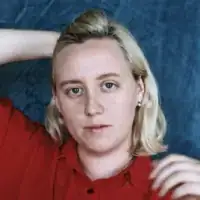 Kendall PayneKendall Payne is a Writer, Director, and Stand-up Comedian based in Brooklyn, New York. Kendall specializes in directing, writing, and producing comedic short films. Her films have screened at Indie Short Fest, Brooklyn Comedy Collective, Channel 101 NY, and 8 Ball TV. She has also written and directed content for the Netflix is a Joke social channels and has written marketing scripts for Between Two Ferns: The Movie, Astronomy Club, Wine Country, Bash Brothers, Stand Up Specials and more. Kendall runs an IRL internet comedy show at Caveat called Extremely Online, and a comedy show for @ssholes called Sugarp!ss at Easy Lover. She studied at the Upright Citizens Brigade Theatre and at New York University (NYU) Tisch in the TV Writing Certificate Program.
Kendall PayneKendall Payne is a Writer, Director, and Stand-up Comedian based in Brooklyn, New York. Kendall specializes in directing, writing, and producing comedic short films. Her films have screened at Indie Short Fest, Brooklyn Comedy Collective, Channel 101 NY, and 8 Ball TV. She has also written and directed content for the Netflix is a Joke social channels and has written marketing scripts for Between Two Ferns: The Movie, Astronomy Club, Wine Country, Bash Brothers, Stand Up Specials and more. Kendall runs an IRL internet comedy show at Caveat called Extremely Online, and a comedy show for @ssholes called Sugarp!ss at Easy Lover. She studied at the Upright Citizens Brigade Theatre and at New York University (NYU) Tisch in the TV Writing Certificate Program.
Short Film Writer & Director
-
QuestionI'm making a documentary about our bridge and how it was destroyed by nature. What are some good interview questions?
 Community AnswerAsk when it was built, how it was built, how big it is, how much it cost, if there are any plans to restore it, etc.
Community AnswerAsk when it was built, how it was built, how big it is, how much it cost, if there are any plans to restore it, etc. -
QuestionIs there any app which I could use?
 Community AnsweriMovie is good. You can edit clips and add sound effects and much more. It's in the Apple App Store for free.
Community AnsweriMovie is good. You can edit clips and add sound effects and much more. It's in the Apple App Store for free.
References
- ↑ https://www.desktop-documentaries.com/making-documentaries.html
- ↑ Kendall Payne. Writer, Director, & Stand-up Comedian. Expert Interview. 3 April 2020.
- ↑ https://www.premiumbeat.com/blog/5-tips-for-great-short-documentary/
- ↑ https://www.desktop-documentaries.com/making-documentaries.html
- ↑ https://www.dummies.com/art-center/performing-arts/filmmaking/storyboarding-your-film/
- ↑ https://www.nyfa.edu/student-resources/how-to-make-short-film/
- ↑ Kendall Payne. Writer, Director, & Stand-up Comedian. Expert Interview. 3 April 2020.
- ↑ https://www.nyfa.edu/student-resources/how-to-plan-an-effective-shooting-schedule/
- ↑ https://www.desktop-documentaries.com/making-documentaries.html
- ↑ https://www.desktop-documentaries.com/mini-documentary.html
- ↑ https://www.dummies.com/business/start-a-business/small-business-marketing/prepare-to-edit-your-marketing-video-log-the-footage/
- ↑ https://www.youtube.com/watch?v=z53opYhlhcs
- ↑ https://www.businessinsider.com/how-to-upload-a-video-to-youtube
About This Article
Before you begin filming your short documentary, make sure to choose a viable subject and write a treatment. Treatments are short outlines of your film that include key scenes and are usually less than 300 words long. After your treatment is done, create a schedule for shooting and craft a storyboard that depicts priority scenes so that you can begin scheduling interviews and shooting your footage. As you film, keep a daily journal of what worked well so you know what to change in the future! Read on for more, including editing techniques you can use to put it all together!
-Step-13.webp)
-Step-2.webp)

-Step-3.webp)
-Step-1.webp)
-Step-4.webp)
-Step-15.webp)
-Step-9.webp)
-Step-10.webp)
-Step-11.webp)
-Step-12.webp)
-Step-16.webp)
-Step-17.webp)
-Step-18.webp)
-Step-19.webp)
-Step-20.webp)
-Step-21.webp)
-Step-22.webp)


